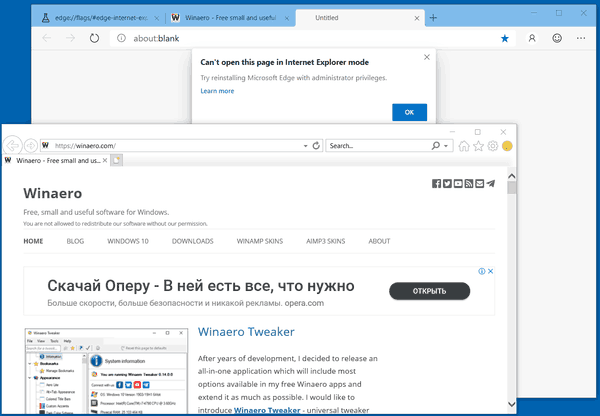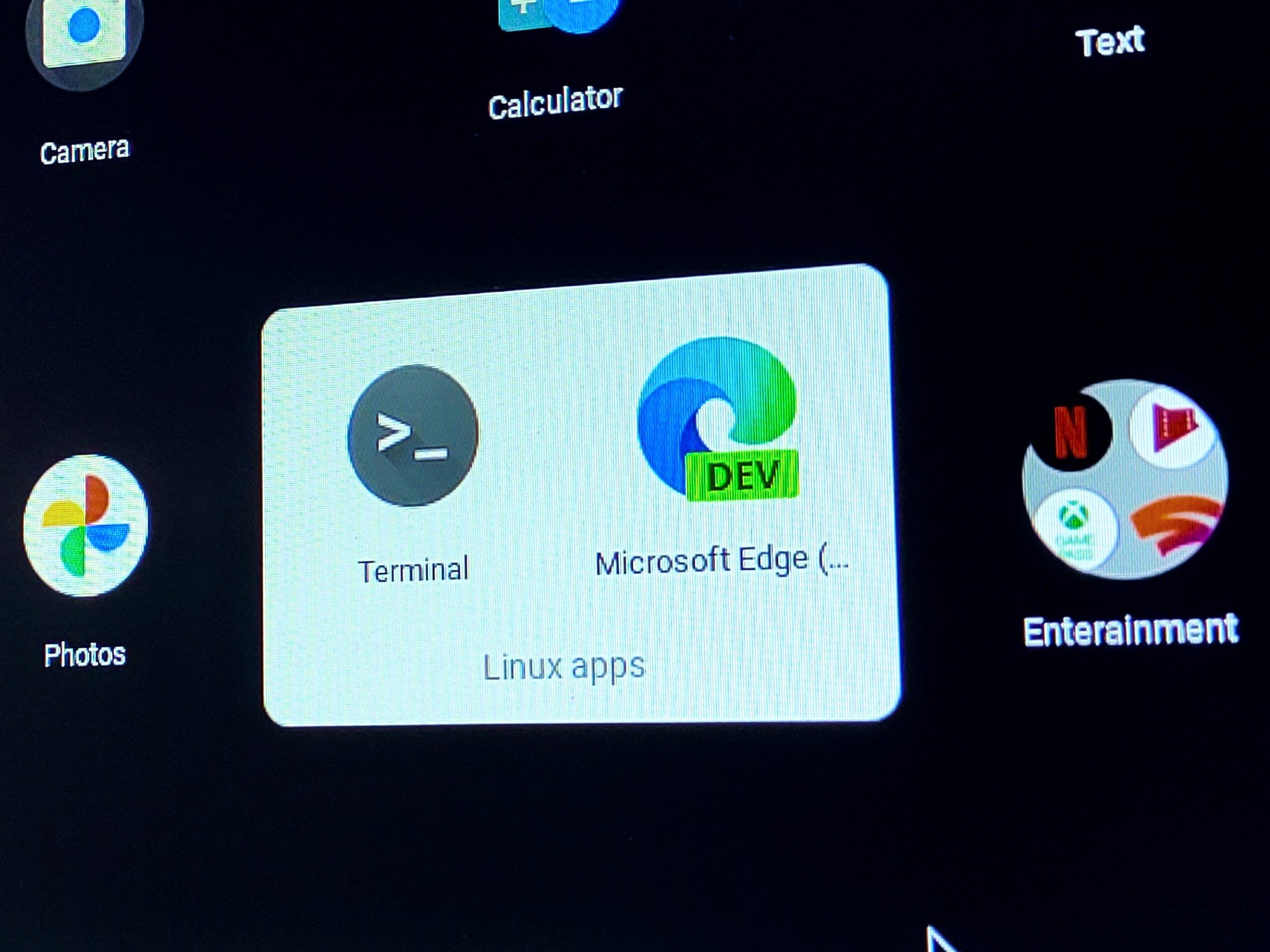Step2: Installing Wine from a Standard Ubuntu Repository (recommended) We recommend that you install Wine on your system through the standard Ubuntu repository, as this way you can have a more stable version on your system. Run the following command in the Terminal as a root user in order to install Wine on a 64-bit version of Ubuntu. After initial reluctance and uncertainties, it seems that Microsoft is finally going to bring the new Edge browser to Linux. In its annual developer conference Microsoft Ignite 2019, the session on Edge Browser mentioned that it is coming to Linux.
- Microsoft edge for non-windows devices. If you live in (or are a business with a principal place of business in) the united states, please read the “binding.
- Note: This answer previously contained a tutorial about installing Microsoft Edge on WINE. This seems to no longer be possible as a result of changes in the installer, WINE, or both. Improve this answer. Follow edited Nov 3 '20 at 2:23. Answered Aug 17 '19 at 19:48.
- Now you no longer need to search for coupon code and cashback offer. With Coupert, the best automatic coupon finder and cashback extension, you can constantly find the best promo codes online and automatically apply the best code to your purchase at checkout.
Join Transform 2021 this July 12-16. Register for the AI event of the year.
Edge is finally coming to Linux. At Ignite 2020 today, Microsoft announced that Edge for Linux will be available in the Dev preview channel starting in October. Linux users will be able to download the preview from the Microsoft Edge Insider website or from their native Linux package manager. Microsoft will start with the Ubuntu and Debian distributions, with support for Fedora and openSUSE coming afterwards.

Microsoft launched Chromium Edge for Windows 7, Windows 8, Windows 10, and macOS in January 2020. The browser has since been installed on “hundreds of millions of devices and climbing,” a Microsoft spokesperson told VentureBeat, and is now the second most popular desktop browser, after Chrome, according to Net Applications.
Microsoft wants Edge to be “the browser for business.” Bringing Edge to Linux isn’t so much an attempt to grow market share as it is a way to give businesses the option of rolling out a single browser to all their employee’s devices. “We are thrilled with customer interest we’ve received since we first announced our intention to bring Edge to Linux,” Edge program manager Kyle Pflug told VentureBeat. “We’ve heard feedback from business customers that they want one browser solution to deploy to their organization regardless of platform, and we’re excited to bring an offering to those that need a solution for Linux.”
Also available today, IT professionals can now roll back to a previous version of Chromium Edge. Microsoft said it is offering this feature because sometimes new versions break things, and in remote work environments, “any break is magnified.” With so many more employees working remotely nowadays, the company wants to give IT Pros a way to quickly “minimize interruption and address the issue.”
Going after developers
Microsoft specifically wants to ensure enterprise developers can get Edge for Linux. The primary goal is to reduce testing costs for businesses that want their websites to work on Edge.
“Linux stands out in that, while it has a relatively small desktop population in terms of what you might call typical consumer or end user, developers are often overrepresented in that population, and especially in areas like test automation, or CI/CD workloads for their web apps,” Pflug told VentureBeat. “Edge on Linux is a natural part of our strategy to reduce fragmentation and test overhead for web developers. By providing the same rendering behavior and tools across platforms, developers can build and test sites and web apps in their preferred environment and be confident in the experience their customers will have.”
Once Microsoft releases the first preview in October, the team plans to ship weekly builds in sync with the Dev channel on Windows and macOS. Microsoft promises developer tools, extensions, test automation, WebDriver, and Puppeteer will all work. Some end user scenarios, such as connected services like sign in and sync will not be available, as those will arrive in future previews. But everything developers care about should work — it isn’t called the Dev channel for nothing.
Because Chromium doesn’t have a Canary channel for Linux, Chromium Edge won’t have a Canary channel for Linux either. Edge for Linux will eventually get Beta and Stable channels, of course, but Microsoft would not commit to a time frame for either.
New Edge features coming soon
At Ignite 2020, Microsoft also announced a bunch of new Edge capabilities that are “coming soon.” WebView2, which is decoupled from specific versions of Windows, will be available for C/C++ and .NET by the end of 2020. Once available, any Windows app will be able to embed web content using Chromium Edge.
Chromium Edge is getting a preview of kiosk mode, also coming soon. With assigned access, it creates a locked-down and tailored browsing experience on Windows 10 for kiosks and digital signage. This is meant to replace the popular kiosk mode in Microsoft Edge Legacy, the version that is not based on Chromium and will lose support on March 9, 2021.
IT Pros also have new functionality to look forward to. They will soon be able to manage their Enterprise Mode Site list from the cloud, instead of locally hosting the XML site list.
Additionally, using Azure Active Directory profiles in Edge, App Configuration in Intune will soon let IT Pros manage only the activity in an app that is related to work, leaving the rest of the device alone. Employees will be able to log in to their work identity on a personal device, while the organization only manages that experience. IT departments get the control they want for compliance, and end users get to use the device they want without handing over the keys.
Finally, Edge will get new PDF features in October. The biggest boon for businesses is the ability to view and validate PDF digital signatures, which is useful for verifying the authenticity of documents, particularly for anything legally or financially binding. Users will also be able to add notes to PDFs and access interactive tables of content.
VentureBeat
VentureBeat's mission is to be a digital town square for technical decision-makers to gain knowledge about transformative technology and transact.Our site delivers essential information on data technologies and strategies to guide you as you lead your organizations. We invite you to become a member of our community, to access:- up-to-date information on the subjects of interest to you
- our newsletters
- gated thought-leader content and discounted access to our prized events, such as Transform 2021: Learn More
- networking features, and more

 Become a member
Become a memberChromium-based evolution of Microsoft's browser, built with a brand new engine and sporting a different yet familiar look, while also offering a bunch of new features along with support for Chrome extensions
Edge In Linux
What's new in Microsoft Edge 91.0.864.1 Dev:
- Added features:
- Added options to print documents at their actual size or to fit them to the page.
- Added an option to prompt before closing a window with multiple tabs open.
- Added the ability to clear Media Foundation data on demand. Note that on-exit is coming later.
Ever since Mozilla Firefox, followed by Google Chrome, started luring users away from Internet Explorer, Microsoft has been trying to bring them back. While Edge was an ambitious project, it failed to convince enough users to return to the default Windows browser. The reasons for this are varied, but among the main ones is definitely the EdgeHTML engine used to power it.
After trying for a long time to make things work, Microsoft has finally relented and switched to Chromium and its Blink engine. They have assured users that Edge will still look and function more or less the same, but changes are inevitable.
One less browser engine for developers to deal with
Wine For Arch Linux
When coding a website, developers have to make sure that it works in every browser out there, or at least the major ones. The main engines to look out for are Google’s Blink, Mozilla’s Gecko, Apple’s WebKit and Microsoft’s EdgeHTML. With the latter on the way out, creating new websites and maintaining compatibility will be that little bit easier.
There are advantages to switching to Blink for Microsoft as well. Implementing new web standards will now be simpler, as everything will be available in the latest Chromium release, presuming it is kept up-to-date by the Edge development team.
Not much has changed when it comes to looks
Most Edge users have never had many complaints about the browser’s visual design, and the UI has always been one of its strong suits. It is understandable, therefore, that Microsoft is trying to keep everything much the same in this regard.
The browser isn’t going to be 100% identical to its EdgeHTML counterpart, but you won’t spot too many differences before accessing its various menus. However, the Chromium-inspired settings page has replaced the old Edge sidebar, which many users will see as an improvement.
Visual customization is somewhat limited at the moment
If there is one area that still needs some work, it’s user personalization. Aside from toggling the home button and favorites bar, there isn’t much else that can be changed, apart from the default fonts.
The dark theme, which originally could only be enabled from the edge://flags page, is now an option in the browser's settings. Edge can either stick to the default system setting or let you select whichever theme you prefer.
Feels fast, and RAM usage is similar or lower than Chrome’s
At first glance, the new Edge runs smoothly and pages load quickly, as expected from the very popular engine. Essentially, it feels just like Chrome, which is great news for users who are thinking of switching browsers.

While RAM usage varies quite a lot, it seems to be lower than Chrome’s when a large number of tabs are open, and higher when only one or two are active at the same time. It seems to do better than the old EdgeHTML variant across the board. However, keep in mind that RAM usage is affected by a number of parameters, so your results may differ.
A plethora of new extensions for Edge users
It is no secret that the Chrome Web Store outshines all other such repositories when it comes to the number of available extensions. If you can’t find an add-on here, you are unlikely to find it anywhere else.
Naturally, only Chromium-based browsers support these extensions, and Edge is now one of them. While Microsoft still promotes its proprietary store, users are free to install Chrome extensions as well.
Same Edge look with entirely different inner workings
So far, Microsoft’s decision to switch to Chromium is looking like a wise one. The new engine hasn’t changed too much about the browser’s design and feel, and it opens a whole new range of possibilities and promises good things for the project’s future.
Filed under
Microsoft Edge was reviewed by Catalin Chelariu
Catalin ChelariuMicrosoft Edge 90.0.818.42 / 91.0.864.1 Dev
add to watchlistsend us an update- runs on:
- Windows Server 2019
Windows Server 2016
Windows 10 32/64 bit
Windows Server 2012 R2
Windows Server 2012
Windows 2008 R2
Windows 8 32/64 bit
Windows 7 32/64 bit - file size:
- 1.7 MB
- filename:
- MicrosoftEdgeSetup.exe
- main category:
- Internet
- developer:
- visit homepage
top alternatives FREE
top alternatives PAID
